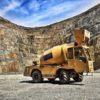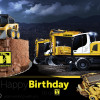Ten Tips for Lowering Total Cost of Ownership for Wheel Loaders
When trying to manage the total cost of ownership of your wheel loader, there are several things you can do that will give you an edge on your bottom line—and your competition. Here are ten considerations that can help you lower your operating and ownership costs and increase your profitability.
- Right-sizing Equipment. Maybe more so than any other piece of heavy equipment, the size of the loader—and the bucket—can have a heavy impact on upstream and downstream operations. Production in an aggregate or concrete mixing plant can be reduced if a loader bucket isn’t large enough to keep the hopper full. Similarly, in a mass earthmoving application, if a wheel loader can’t keep up with the dozers pushing material to it, then those dozers will be forced to wait.
It’s also important to remember that bigger isn’t always better. A wheel loader or bucket can be too large, depending on the application. An oversized machine may have to sit idle waiting to refill a hopper, or waiting for more material. Be sure to work with your CASE dealer and choose the right-sized machine for your application.
- Know Your Engine. Today’s Tier 4 Final wheel loaders are equipped with a variety of engine types and after-treatment technologies, and knowing the differences, as well as the impact that they can have on your operation, is essential in managing your ownership costs.
CASE has adopted Selective Catalytic Reduction (SCR) technology for use in its F Series wheel loaders. SCR lowers harmful emissions through a simple chemical reaction by introducing Diesel Exhaust Fluid (DEF) into the exhaust stream. These systems do not require any kind of regeneration, filter replacement or other maintenance practices found in other systems. SCR allows the engine to run at peak performance, which provides faster throttle response while also maintaining lower temperatures and delivering up to 20% better fuel efficiency over other solutions. It also helps the engine run at lower temperatures, which ultimately extends the service life of components that surround the engine as they are not subject to as much heat stress.
It’s important to understand how your after-treatment system works, and how it can impact your productivity in different applications. For example, long warm-up periods in the cold months, as well as any excessive idle times can have a negative impact on the efficiency of SCR-equipped engines. Besides the obvious fuel costs associated with long idle times, this practice also makes SCR systems run less efficiently. Operators will experience higher DEF dosing rates and more frequent fill-ups, so we always suggest using the auto-idle or shutdown features to limit idle times and improve engine efficiency—this will lower your fuel and DEF costs over the life of the machine.
- Matching Axles to Operation
Pairing the wrong axle/tire configuration to a specific wheel loader application can cause increased wear to the tires, and can put the axles under unnecessarily excessive load. Properly managing this lowers costs over time and prevents potential long-term damage to the axles.CASE offers three axle options designed to meet the unique requirements of nearly all applications—limited-slip, differential lock and open axle.
Limited-slip
CASE offers a standard limited-slip axle—both front and rear—on our 521F, 621F, 721F, and 821F wheel loaders.This axle type is ideal for the vast majority of applications because it allows the machine to operate similarly to an open axle in non-demanding conditions. In normal operation, the differential equally supplies torque to each side of the axle, but if one wheel begins to turn faster than the other, the axle will automatically apply additional torque to the wheel with less traction and increase tractive effort to the opposite wheel—this is all done mechanically without any action by the operator or any computer control. Limited-slip axles balance the benefits of traction control with the features of an open axle with no operator input.
Differential Lock
CASE offers an optional differential lock axle on the entire wheel loader product line. This axle configuration is highly beneficial when utilizing solid tires and/or operating in more demanding conditions. This axle can transmit 100 percent of the available torque to either wheel, and can be controlled automatically by the loader’s microprocessor or manually by a foot switch. When the locking feature is not activated, the axle operates like an open axle.Open Axle
The open axle is the simplest of all axle designs. Open axles come standard on our larger wheel loaders (921F and above), and are best suited for solid or hard-packed earth where these large wheel loaders operate the most often. With this axle type, torque is delivered to both wheels equally.Discuss the surfaces on which you are planning to operate, as well as any other specific application conditions, with your dealer in order to get their recommendations for the best axle options.
- Automatic Bucket Controls – Proximity Switches, Sensors and Magnetic Detents.
These features allow an operator to set a position for the bucket—like “return to dig” to approach and hit the pile—which allows them to concentrate on maneuvering the machine and practice safer operation while maintaining the machine’s hydraulic and mechanical effort for driving functions. By moving the hand control / joystick into the detent position, the bucket will automatically position itself with a single fluid movement. The operator doesn’t need to monitor or control the angle of the bucket. They can concentrate on moving the machine, hitting the pile, approaching the truck/hopper, or running the load a distance. The bucket will locate itself in exactly the right location that was set up by the operator. This type of machine automation is a surefire way to increase jobsite and equipment efficiency, and lower your long term costs. - Attachment Maintenance. If you’re working with an attachment with a worn-down cutting edge or bucket teeth, your wheel loader is going to work harder, burn more fuel, spin your tires and take more time and wages to perform the job at hand. A worn out bucket attachment can cause lots of unnecessary wear on the machine and reduce jobsite efficiency. Remember to always take the time to make sure that your attachments are properly maintained.
- Operating Modes. Most manufacturers now offer multiple operating modes on their wheel loaders and other equipment, so it’s important for operators to be aware of and take advantage of these options. To help owners and operators manage fuel consumption, CASE wheel loaders feature three operating modes with varying RPMs and fuel efficiency. Our wheel loaders also include an auto-idle feature that kicks in after three seconds of inactivity, and an auto-shutdown feature that shuts the machine down after three minutes to help further reduce fuel consumption.
- Telematics. One of the best ways to manage your total cost of ownership, as well as improve productivity and simplify maintenance procedures is through telematics. Telematics systems can give equipment owners unprecedented amounts of data on how a machine is being utilized in the field, and can offer insights that can help lower ownership costs. It is important to take the time to review the data and understand items such as fuel consumption and idle time. A higher level of awareness of your machines’ idle times vs. working times will have an impact on your operating costs.
- Operating Practices. How a machine is operated can have a significant effect on its bottom line. Operators can be coached in a number of ways to help reduce equipment costs, including methods to reduce idle time, operating the machine in a manner that puts the least amount of wear and stress on an undercarriage, and proper use of bucket controls and functions to optimize fuel efficiency.
A wheel loader may be able to perform the same loading cycle in an eco/fuel efficiency mode as it would operating at full RPM in a standard or power boost setting. In this case, there is no practical reason to run at a higher power mode and burn excess fuel.
Identifying and eliminating unnecessarily rough or unsafe operating practices will also reduce possible damage to the machine and the jobsite, which can result in unplanned out-of-pocket expenses and potential downtime for repairs.
- Planned Maintenance Contracts. Planned maintenance contracts can save equipment owners a significant amount in time and cost savings. With a planned maintenance contract, all that an owner has to worry about for the first 3,000 hours is fueling and greasing the machine—the dealer handles all other preventive maintenance activities.
In addition to the basic cost savings, there is also a significant savings in downtime and labor. Not every business has a dedicated mechanic, or staff that is knowledgeable in equipment maintenance. Having your dealer/service partner handle service and maintenance eliminates that concern and allows your staff to focus on the job at hand. Talk to your CASE dealer to learn more about ProCare and the planned maintenance coverage you receive on select new CASE equipment.
- Utilizing Remanufactured Parts. Remanufactured parts are available now more than ever, and are a great option to consider for owners who want to keep their costs down. In order to better serve the needs of their customers, many OEMs now keep thousands of remanufactured parts and components in stock, ready to ship. Ordering readily available remanufactured parts and components and having them installed immediately is a much more timely approach than having to wait for a part to be repaired.
The cost of remanufactured parts can often be up to 40 percent less than a new part, and most feature warranties that may meet or exceed other OEM warranties. This provides owners with peace of mind and protection against additional costs during the life of the warranty.













